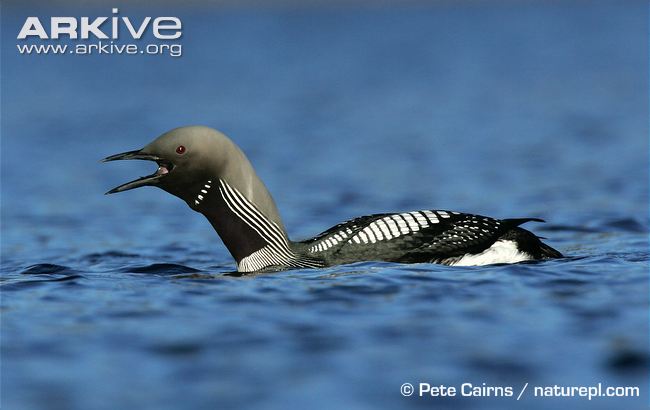
Gavia arctica
TAXONOMY
Colymbus arcticus Linnaeus, 1758, Sweden. Two subspecies recognized.
OTHER COMMON NAMES
English: Black-throated diver; French: Plongeon Arctique;
German: Prachttaucher; Spanish; Colimbo Arctico.
PHYSICAL CHARACTERISTICS
23.6–29.6 in (60–75 cm); 5.7 lb (2.6 kg). Very similar to the
smaller Pacific loon. Black upperparts with white patches,
white underparts, black throat, and gray head and neck (darker
near bill). Differentiated from the Pacific loon by white flanks,
darker nape, more distinct white stripes on neck. In hand,
throat shows faint greenish iridescence. Basic, juvenal, and second
alternate plumages similar, with gray upperparts, crown,
and nape and white underparts.
DISTRIBUTION
Breeds from extreme western Alaska across northern Eurasia to
northern Scotland. Winters coastally from Japan to China and
Europe.
HABITAT
Breeds on medium-to-large lakes and ponds in northern forests
and tundra; winters on coasts.
BEHAVIOR
Similar to the Pacific loon.
FEEDING ECOLOGY AND DIET
Consumes a wide variety of fish, similar to other loons. Has
been observed catching frogs.
REPRODUCTIVE BIOLOGY
Incubation 28–29 days, flight 60 days. In Scotland, artificial
breeding platforms have been used to increase chick production
by an estimated 44%.
CONSERVATION STATUS
Most populations stable, not listed on IUCN Red List of
Threatened Birds.
SIGNIFICANCE TO HUMANS
A species of interest for many people. Nest platform programs
have been started in Scotland, where populations have
declined.
Other popular Animals
Photo Gallery of - Arctic loon
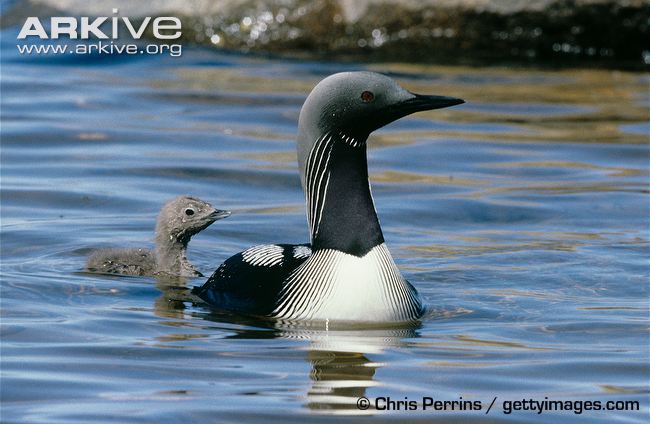
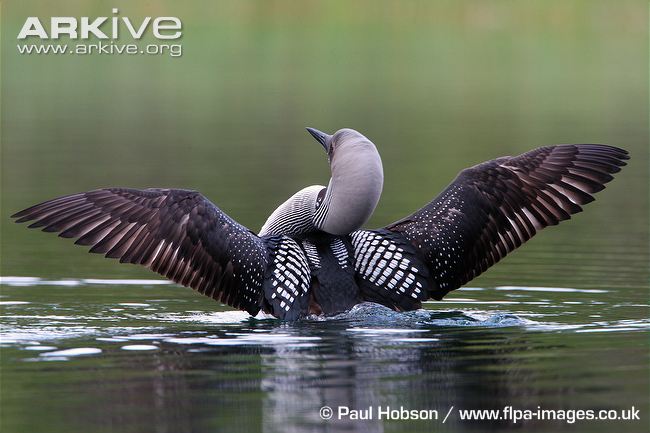
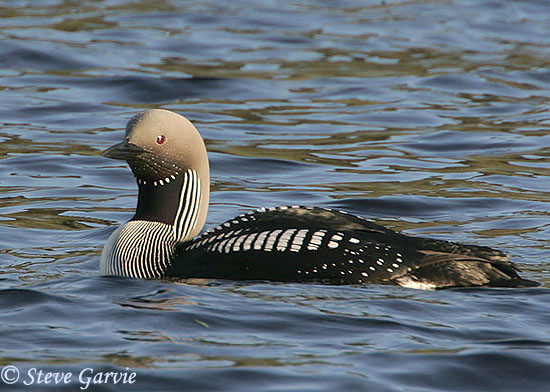
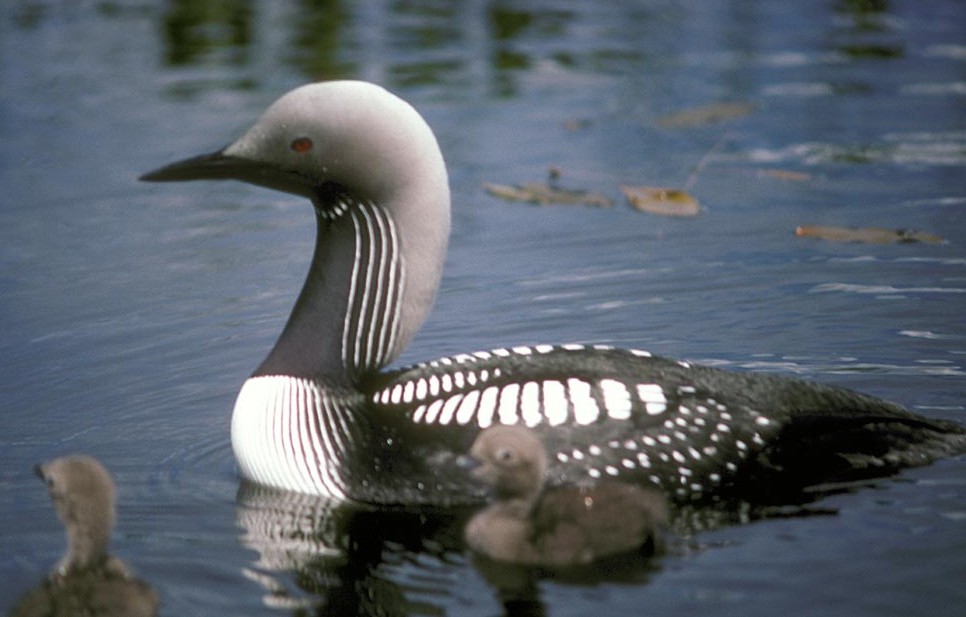
 Animalia Life
Animalia Life